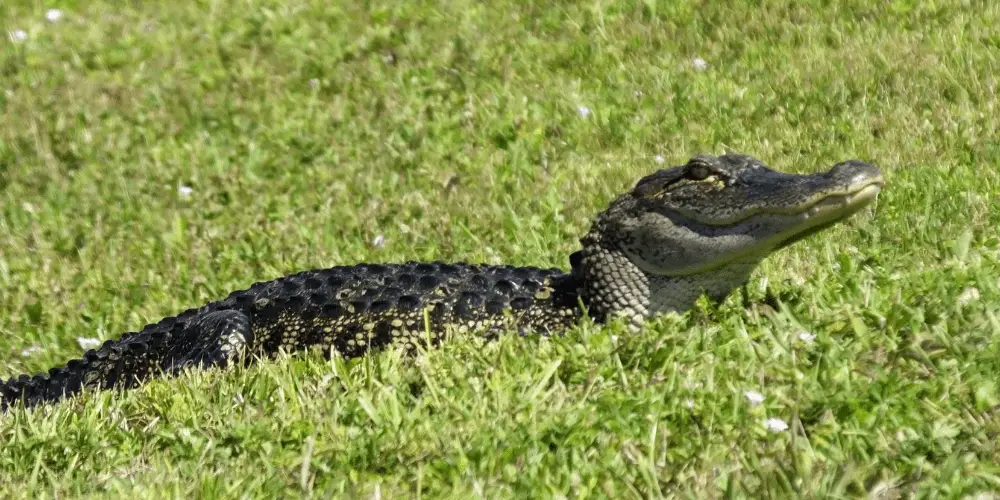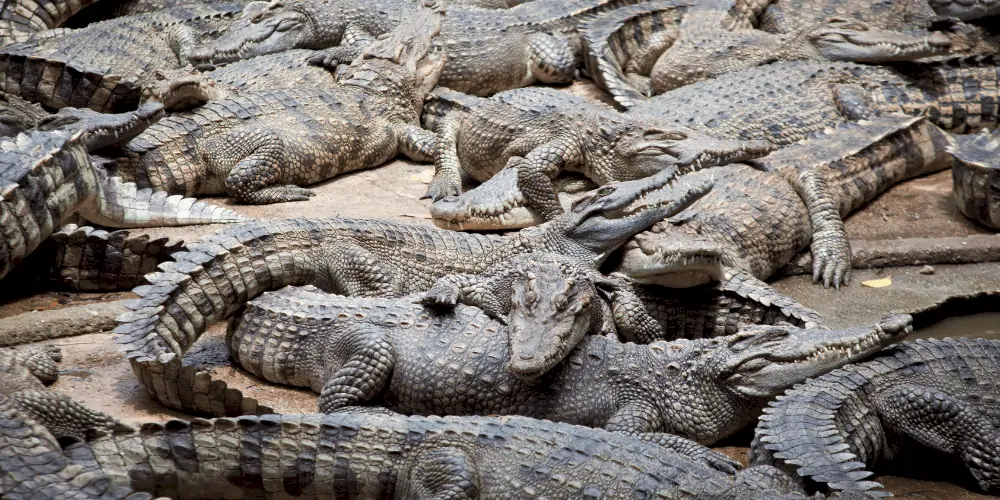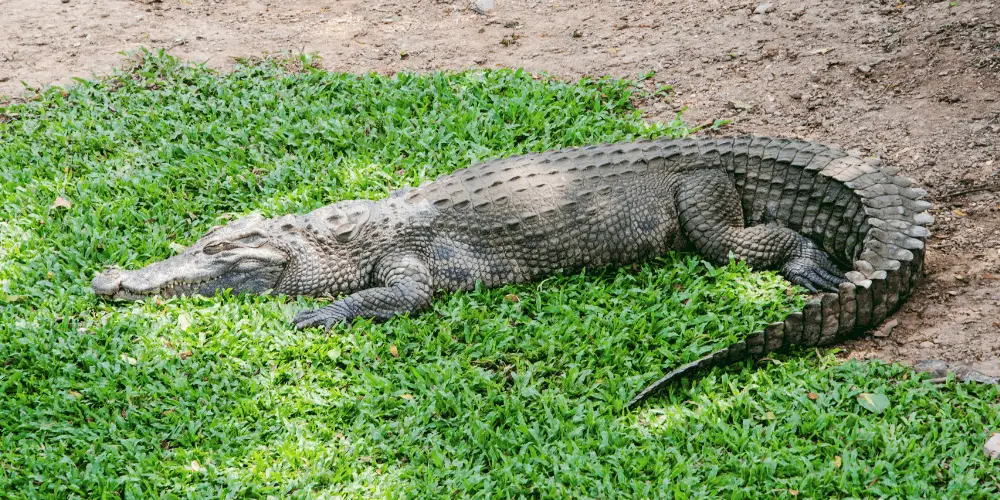The last thing anyone ever wants to do is tempt fate with an alligator. When answering the question “How fast can alligators run?” there are many preconceived notions that clutter the truth- particularly when relating to how we should respond to being chased.
Alligators, on average, can run up to 11 mph, but rarely will they ever breach 12-20 mph. While in water, they swim about 20 mph.
Some reputable sources claim that they won’t typically be found running faster than 11 mph. The difference in numbers in the land speed of an alligator is due to several factors, including terrain, alligator size, age, and reasoning.
Are Alligators Faster than Humans?

As aforementioned, there are a handful of different speeds that different departments will report. The range is between 11-12 miles per hour. Humans average out at 8 mph in a run, pushing up to 15 mph in a sprint.
A smaller group of alligators will have a much easier time moving across the land at higher rates of speed and can be held responsible for the higher end of the range of speed. Naturally, the older they get, the larger they get, the heavier they get, and the more difficult it is for them to reach higher speeds or even do much running on land at all.
American alligators can swim up to 20 mph (32.18 km/h) and run on land as fast as 11 mph (17.7 km/h), according to the San Diego Zoo.
-livescience
Size and Weight Differences
Sex is also a factor concerning the land speed of alligators. A bull alligator who has just reached maturity can average out at about 20 mph. At this stage in its life, it’s about 8 feet long and weighs about 250-300 lbs.
Female alligators are often sleeker than males and don’t grow to be as large or as long, therefore hundreds of pounds lighter when fully grown. Due to the difference in weight, it will be easier to reach and maintain top speed a little longer than their male counterparts.
Short Bursts of Speed
An alligator can reach its top speed alarmingly fast. Being low to the ground and having feet built for traction is nearly an instantaneous burst of speed from a standstill. This is an extremely deadly feature for an animal equipped with weapons as the alligator enjoys.
Alligator Gait
When simply moving from one spot to the next on land, an alligator will walk relatively close to the ground. However, there are times that a gator will walk with its body and tail suspended as high off the ground as it can get away with.
They do this for a few reasons. One is to give it the appearance of being larger in the eyes of a potential problem, and another is to switch up its gait to assist in faster motion.
Crocodile Gait
For the sake of comparing, an alligator’s gate works a little differently when it comes to a run. Unlike alligators, crocs can develop a gallop and utilize a form of gait called a bound.
Alligator Speed On Land vs Water
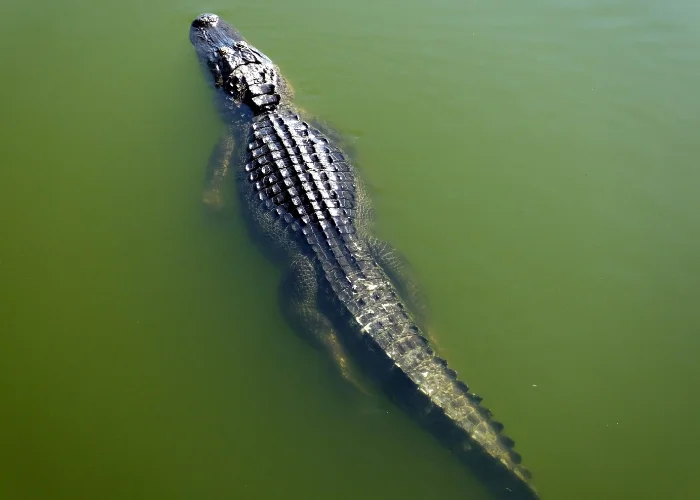
As scary fast as they may be on land, they are equally as fast in the water, often clocking in at about 20 mph. The water is the hunting ground of choice, as the alligator is far better suited to thrive in an environment that cancels out their bulky weight.
Their webbed feet, along with the prop-like motion of its tail, propel the alligator through the water with ease, allowing it to snatch fish or to launch itself toward other unsuspecting types of prey.
Alligators Can Launch Themselves
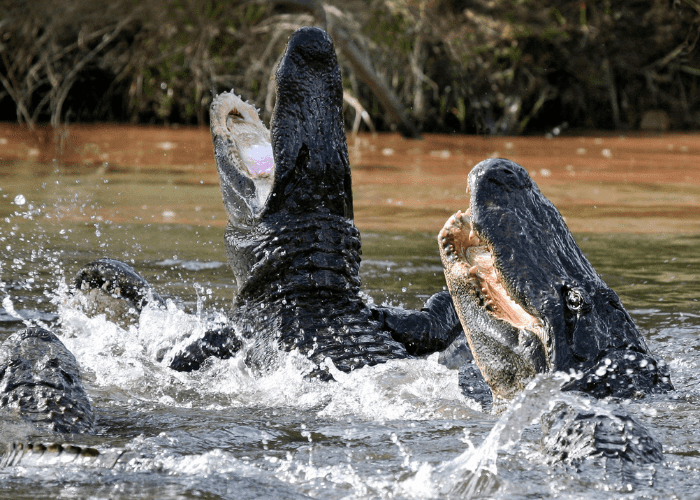
If it weren’t enough for an alligator to swim fast and run fast, they could also launch themselves out of the water in the blink of an eye. In many southern states that harbor alligators, it isn’t uncommon to find activities that showcase this shocking ability.
When watching an alligator launch itself up and out of the water for a chunk of suspended chicken or fish, it won’t be uncommon to witness them get either 2/3rds or more of their bodies out of the water, straight up into the air.
Alligators Can Also Climb!
Yes, alligators can also climb! If it isn’t too well known that they can jump, it’s even more of a surprise that they can climb too.
If there is enough of an incline, they can climb just about anything. They can climb up trees, ladders, staircases, and most impressively, fences.
The climbing ability explains how these prehistoric creatures can get into areas that are supposed to be off-limits to them. Pools, inside homes, trailered boats, or any other places you’d hate to see a gator are often reached by climbing over obstacles.
While we all concentrate on ensuring they can’t get underneath something, whether or not they can climb over it will also need to be addressed.
Is Running in a Zig-Zag Pattern a Good Idea to Get Away from an Alligator?
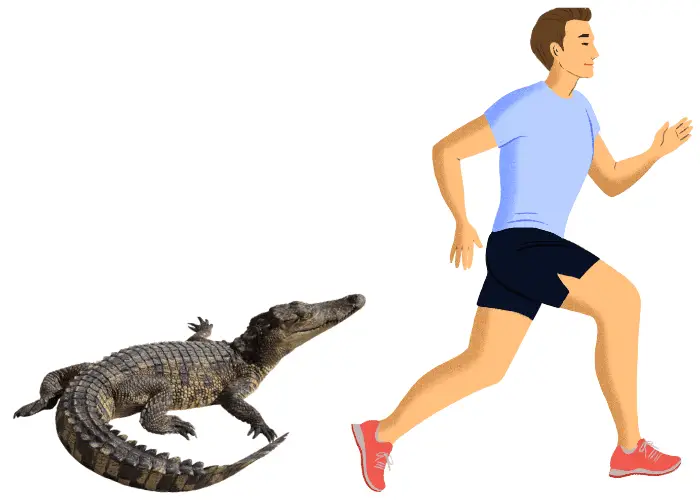
At the beginning of the article, I mentioned some preconceptions about the method of flight we think is best to choose when chased by an alligator. An off-the-cuff answer about fleeing this super predator is to run in a zig-zag pattern due to the shape of the gator, it won’t be able to catch you.
There are several problems with this notion. The first is that the more you zig-zag, the less distance you’re ever going to make from the alligator. This is easy enough to conceive with just a little bit of thought.
Also, while we’re zig-zagging, the gator is likely going to run in a straight line and will be doing so as fast as it can. If you’re running back and forth, you’re going to wind up in the middle over and over again.
Plus, they can turn on a dime if they choose to do so. True, when straightened, their short legs and long body make it difficult for an alligator to turn quickly. However, their bodies can curl and turn the animal instantly, often catching prey by surprise.
They cannot do this so easily at top speeds, but they wouldn’t need the top speed if they were chasing a zig-zagging human.
What to do if an Alligator is Chasing You
Turn around and run as if your life depends on it- because it likely does. Forget the running back and forth, it will only slow you down. Forget thinking that you can climb up a tree before it can grab you because it can both hop and climb.
Despite all of the dangerous tools and incredible abilities alligators have at their disposal, we have one thing on them- endurance. Gators rarely ever push the issue and will stop a chase within seconds after its bursts into action.
It’s the job of the person being chased to get as much distance as possible in that amount of time between himself and the gator.
Final Thoughts
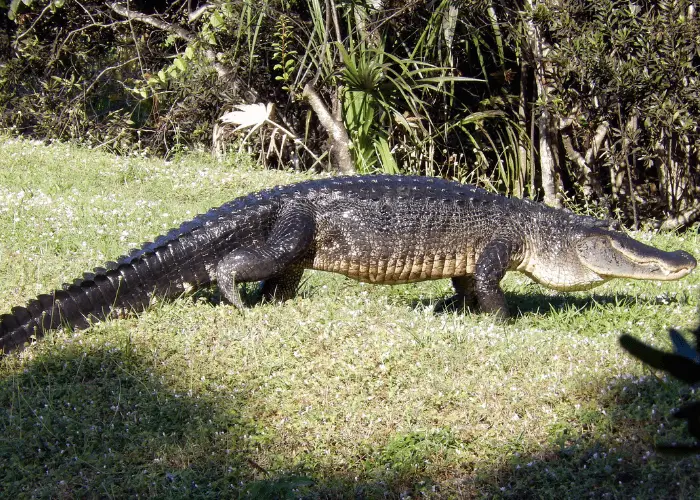
When you drill down into all of the physical feats at the disposal of the alligator, it’s no wonder why these prehistoric creatures are still among us. They are predators through and through, built from head to tail to survive.
Fortunately for us, the main reason they’d expel the energy to chase after a human on foot is due to being angered or defending its turf or young, rather than hunting.
MORE CROCODILE ARTICLES ARE BELOW:
REFERENCES:
- University of Florida. (2023). Living with Alligators: A Florida Reality. https://edis.ifas.ufl.edu/publication/UW230
- Crocodile. (2023, June 11). In Wikipedia. https://en.wikipedia.org/wiki/Crocodile

